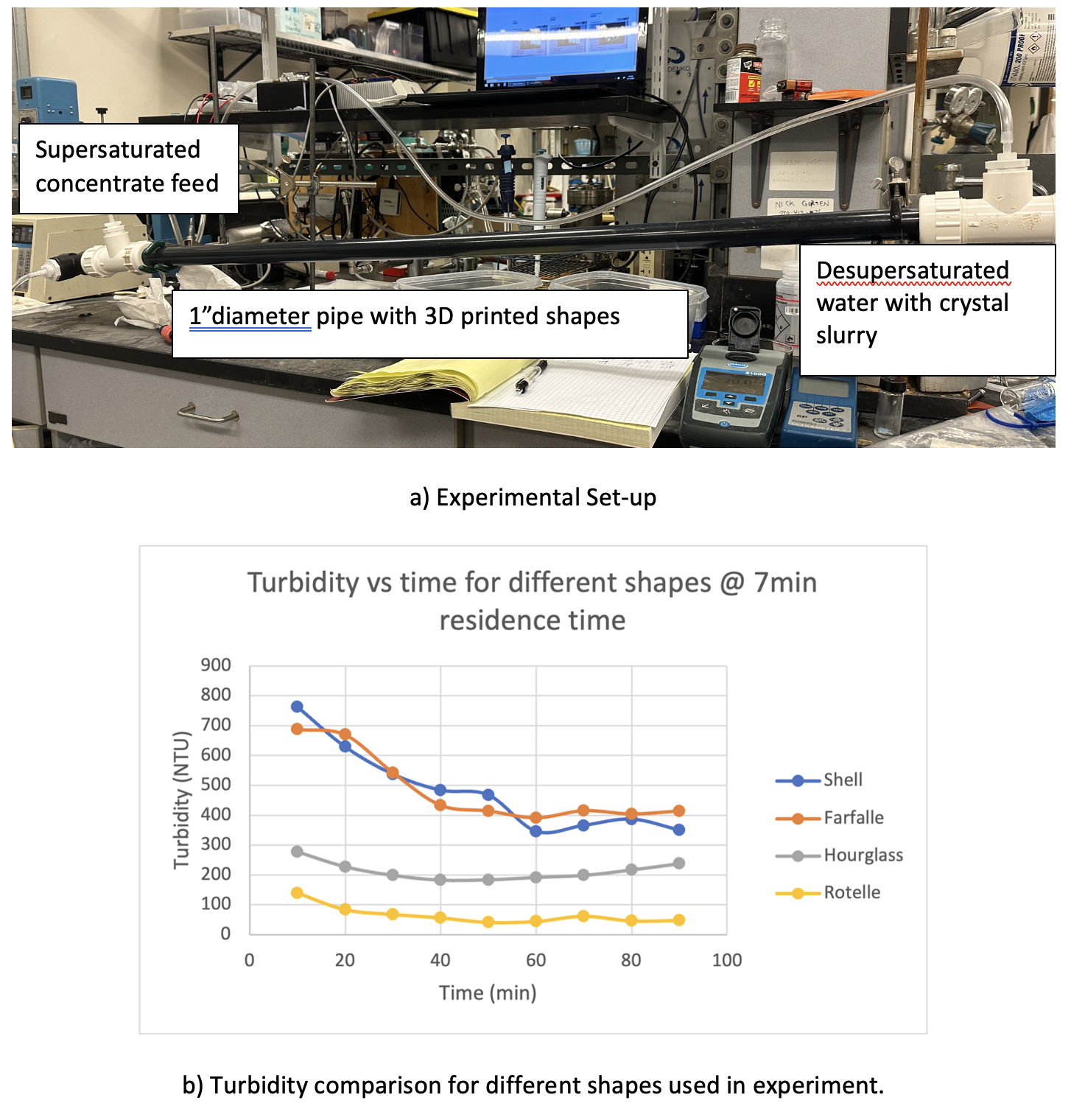(582b) Concentrate Minimization: Testing of Improved Static Mixer Crystallizers for Inland Brine Management
AIChE Annual Meeting
2024
2024 AIChE Annual Meeting
Engineering Sciences and Fundamentals
Applied Fundamentals in Transport Processes
Wednesday, October 30, 2024 - 3:48pm to 4:06pm
The technical approach to be evaluated in this work is to use inline, static mixers (SMs) to accelerate crystal nucleation and overall desupersaturation of sparingly-soluble minerals in RO concentrate. Static mixers offer the flexibility to modify and analyze various parameters, such as the shape, size, and number of mixing elements, as well as flow characteristics including rate, energy dispersion, and pressure drop. This helps to optimize the crystallization rate.
The crystallizer is designed as a pipe with inserts in it. It is designed to allow the mixer elements to be removed and replaced easily. The static mixer crystallizer is connected to the concentrate RO stream with an intermediate surge tank and appropriate flow control can vary the residence times. Four different 3D printed shapes are S, F, R, and H; and different commercial polymer materials such as polyester, nylon, and polypropylene are tested to identify best shapes and materials to enhance the nucleation and crystallization rate.
The bench work experiments in lab with model supersaturated solution says that S and F are the better shapes (see figure) for increasing turbidity (a surrogate for desupersaturation) and thus crystal formation. The ongoing pilot test with real concentrate, containing antiscalants, will also be discussed to enhance our understanding.
